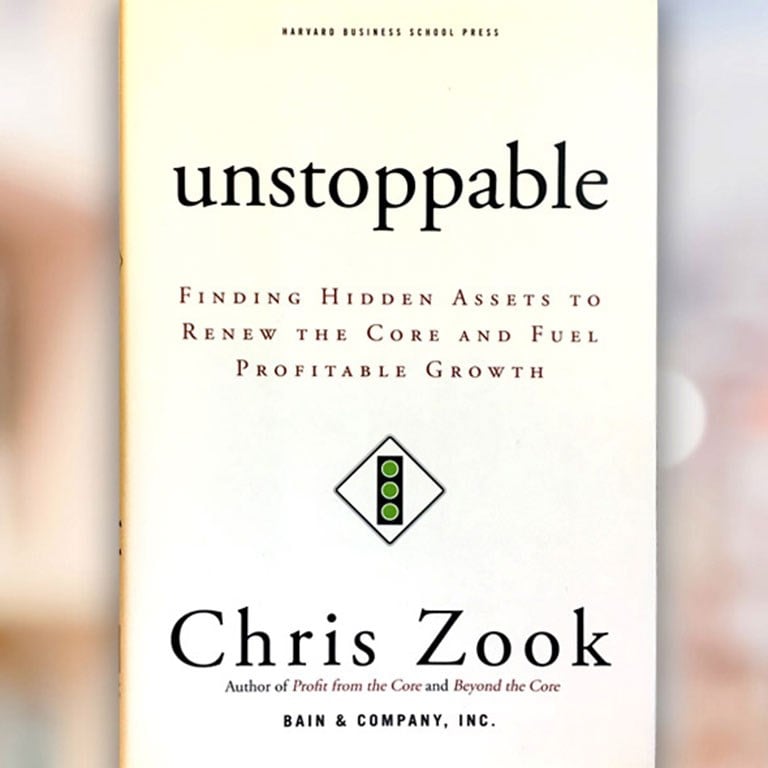Article
Facing a slowdown in its core business of selling ads tied to search terms, Google has recently been scouring the landscape for acquisitions. It bought YouTube for $1.65 billion in 2006 (and soon found itself facing a $1 billion copyright infringement suit from Viacom). Now it is said to be bidding more than $2 billion for the online advertising company DoubleClick. With outlays—and risks—of this magnitude, Google may find profitable growth in its acquisitions harder than it imagined.
Rapid shifts in markets and technologies are forcing companies of all sorts to change direction faster than ever. As a result, many management teams are tempted by "big bang" solutions: dramatic, transformative mergers or aggressive leaps into sexy new markets. But bold moves rarely pay off. The success rate for major, life-changing mergers is only about one in ten. It is less than one in seven for moves into a hot new market far from a company's core.
For most companies, reinvention of a core business doesn't have to involve such high levels of risk. Bain's research shows that nine out of every 10 companies that successfully renewed themselves in the past decade found the solution in mining their hidden assets—assets they already possessed but had failed to tap for maximum growth potential.
The classic example is Apple. The iPod drew on the company's well-known skills in software, user-friendly product design, and imaginative marketing—all underexploited capabilities. Samsung focused on a different set of hidden assets—underinvested business lines—to redefine its core. It shut down or sold 76 businesses, thereby freeing up resources to invest in its lagging but promising semiconductor and consumer-electronics businesses. Today, Samsung is a leader in memory chips and mobile phones as well as in high-end television sets and flat-screen monitors.
Shouldn't well-run companies already be using all of their valuable assets? In fact, large, complex organizations always acquire more capabilities and businesses than they can focus on at any one time. But when a company needs to redefine its core, it often discovers that secondary assets and capabilities of the past suddenly assume center stage, and are the key to new growth.
One way to open management's eyes to the hidden assets in its midst is to identify the richest hunting grounds. Bain's three-year study of transformation showed that assets yielding the best results are usually camouflaged as hidden business platforms, untapped customer insights, and underused capabilities. Turning an overlooked business platform into a new core is more common than you might imagine.
Think of how General Electric revitalized itself via GE Capital, a division that has now fueled its parent's growth and profitability for years. More recently, Nestle discovered it had a number of isolated food and drink products designed to be consumed outside the home. By assembling those products into a new unit, Nestle Food Services, it created the core of a new multibillion-dollar business.
Untapped customer insight is another hidden asset. Harman International, a maker of high-end audio equipment, faced stagnating growth in the consumer and professional audio markets. But Cofounder Sidney Harman had the insight that customers who bought expensive audio equipment at home were spending more time in their cars. Along the way, Harman also had purchased the German company Becker (which sold radios to Mercedes-Benz), allowing it to draw on Becker's digital audio capabilities, and to develop high-end automotive "infotainment" systems that fueled the company's renewal. Based largely on its success in this new customer segment, Harman's market value increased 40-fold from 1993 to 2005.
Hidden business platforms and hidden customer insights are assets that companies already possess; in theory, management just has to uncover them and put them to work. Capabilities—the ability to perform specific tasks over and over again—are different. To fuel new growth, an underexploited capability usually needs to be combined with other assets to produce something distinctly new and better.
The Danish company Novozymes, for example, made low-tech commodity enzymes used in detergents. But when Novozymes was spun off from its parent company in 2000, CEO Steen Riisgaard focused his research capability—his PhDs and their laboratories—on developing the company's skills in producing specialty bioengineered enzymes. That led to its next "repeatable" growth formula. Today, the company is a leader in producing enzymes that extract alternative biofuels from plants.
Recovering from a crisis in the core may well be the hardest act in business. Since 1994, more than 50% of the companies in the Global 500 have seen their world changed by threats to their core business models. About half of this group have gone bankrupt or been acquired, and the other half have had to make risky and fundamental changes in strategy. What's the best response to this challenge? A few will buy their way to success, and Google may be among them. But for most companies, the answer is actually right in front of them, hidden from view.
Chris Zook is co-director of Bain & Company's Global Strategy practice and author of Unstoppable: Finding Hidden Assets to Renew the Core and Fuel Profitable Growth (Harvard Business School Press, April 2007.)

Unstoppable
Learn more about how companies can use hidden assets to renew the core and fuel profitable growth.